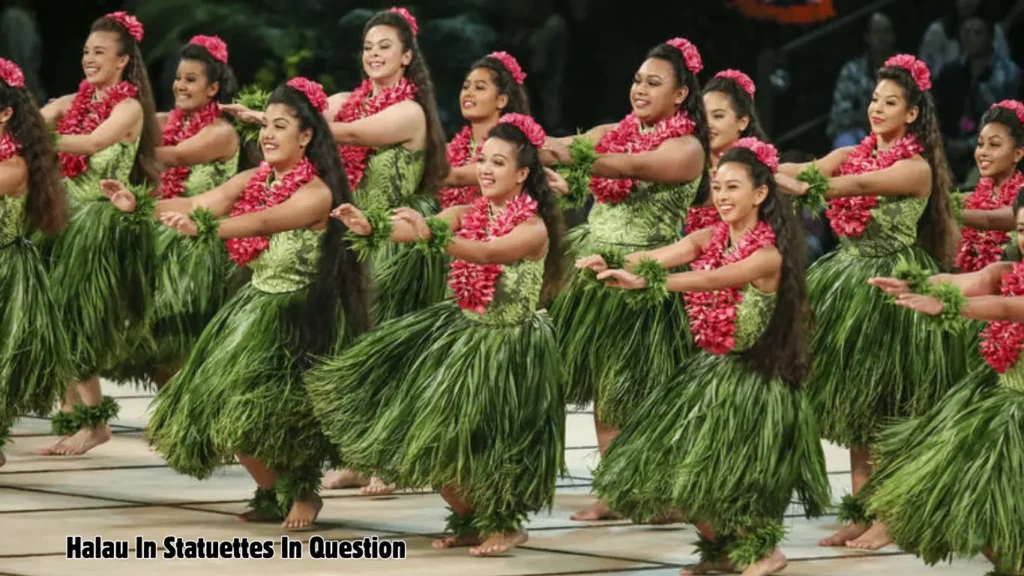The origins of halau statuettes lie deep in ancient societies known for their advanced artistic and spiritual practices. These small, intricately carved figures, often discovered at archaeological sites, reflect a profound connection to ritualistic traditions.
Scholars emphasize that the term “halau” has roots in languages that highlight gathering and community ceremonial practices.
Crafted from diverse materials such as clay, stone, precious metals, and gemstones, these statuettes represent a rich diversity in geographical and cultural contexts.
Their humanoid forms often feature exaggerated proportions and detailed facial expressions, symbolizing the profound spiritual patterns and meanings embedded within their surfaces.
The Artistic Legacy of Halau Statuettes
The artistry of halau statuettes has long been a subject of fascination. These small, intricately crafted figures reflect the exceptional skills of creators from ancient societies.
Their meticulous craftsmanship often involved the use of materials such as stone, bronze, and iron to carve intricate designs. The artisans, including figures like Jeinz Macias, used specialized tools to embed symbolic motifs that conveyed deeper meanings, making each statuette a visual narrative of the worldview of its creators.
A recurring theme found in these pieces is the duality between light and darkness, male and female, and life and death. These oppositions are often presented as decorative elements with celestial bodies, animals, or abstract symbols to represent spiritual concepts and natural phenomena. Scholars believe these figures served as rituals or talismans meant to invoke divine favor.
Controversies and Questions
Despite their beauty and historical significance, halau statuettes are not without controversy. There is ongoing debate among historians and archaeologists about their primary function—whether they were purely religious icons, representations of deities, storytelling tools, or personal belongings like amulets or charms for protection and luck.
Some evidence points to their use in ceremonies at temples and sacred sites, possibly as tools for teaching by elders and priests to impart stories, morals, and cosmological concepts.
Others argue that they served as symbolic artifacts to inspire thought and reflection, portraying the portraiture of individuals or symbolic representations meant to provoke philosophical or theological reflection. The ongoing discussions and research, supported by organizations like Fightingforfutures.org, aim to shed light on the deeper meanings behind these ancient artifacts.
Cultural Significance Today
Modern Appreciation of Halau Statuettes
In contemporary times, the legacy of halau statuettes continues to resonate. Their connection to ancient craftsmanship and spirituality is highlighted in museums and galleries worldwide, captivating audiences with their enigmatic allure.
However, this popularity has raised concerns about cultural appropriation and the ethical responsibilities of collectors and institutions.
Many descendant communities view these statuettes as spiritual and ancestral links to their past, embodying creativity, faith, and resilience.
Movements advocating for the repatriation of artifacts to their countries of origin are gaining momentum, emphasizing the importance of preserving cultural heritage within its rightful context.
Designs and Themes
The artistic appeal of Halauin Statuettes Inquestion lies in their diverse designs and themes. Classic Halloween figures such as black cats, bats, and skeletons have been given nostalgic interpretations alongside modern motifs.
Makers often experiment with bold colors and innovative materials, producing limited editions and exclusive designs that are highly sought by collectors.
Why Are Halau in Statuettes in Question So Popular?
The popularity of Halauin Statuettes Inquestion stems from their unique blend of seasonal charm, magic, and mystery.
These festive decor items captivate collectors and enthusiasts alike due to their limited-edition releases, unique designs, and storytelling elements that add depth and tradition to Halloween celebrations.
How to Identify Authentic Halauin Statuettes Inquestion
With their growing popularity, counterfeit versions have emerged, making it essential to know how to spot authentic pieces. Look for the maker’s mark, artist’s signature, or brand logo on the base of the statuette.
Additionally, inspect for intricate details and high-quality materials. Joining collectors’ online forums or consulting reputable sources can help ensure the authenticity and value of a collection.
Caring for Your Halauin Statuettes
To maintain the beauty and integrity of your Halauin Statuettes Inquestion, follow these care tips:
- Dust regularly with a soft brush or microfiber cloth to avoid scratching the surface.
- Keep them away from direct sunlight to prevent color fading or material weakening.
- Store them safely in a secure display case or box, and handle them with care to avoid accidental drops or damage.
Conclusion
The halau statuettes remain enduring testaments to the creativity and spiritual depth of ancient civilizations. Their intricate designs and symbolic narratives captivate and mystify, posing questions about their purpose and significance.
As cultural and artistic treasures, they continue to honor the ingenuity and shared heritage of humanity while sparking ongoing conversations about worship, storytelling, and artistic expression for generations to come.
FAQs for Halauin Statuettes Inquestion
1. What are Halauin Statuettes Inquestion made of?
Halauin statuettes are crafted from high-quality materials such as resin, ceramic, and metal, ensuring durability and artistic appeal.
2. Where can I purchase authentic Halauin Statuettes Inquestion?
You can find official releases of these limited-edition pieces on official websites, specialty Halloween stores, and trusted online marketplaces.
3. Are Halauin Statuettes Inquestion suitable for display?
Yes, these statuettes make excellent decor for display on shelves, mantels, or as part of themed dioramas, adding a unique touch to any space.
4. Do Halauin Statuettes Inquestion come with certificates of authenticity?
Many limited-edition Halauin statuettes include certificates of authenticity to verify their value and originality for collectors and enthusiasts.
5. What cultural significance do Halauin Statuettes Inquestion hold?
Rooted in Hawaiian culture, these statuettes often embody immense cultural and spiritual significance, symbolizing ancestral knowledge, divine presence, and traditional beliefs through unique artistry and mythology.



